10mg
Showing 9801–9850 of 15389 results
-

Hexanoic-2,2-d2 Acid
$62.96 Add to cart View Product DetailsMolecular Formula : C6 D2 H10 O2
-
Hexanoic-5,5-d2 Acid
$116.44 Add to cart View Product DetailsMolecular Formula : No Data Available
-

Hexanoyl Glycine
$73.31 Add to cart View Product DetailsMolecular Formula : C8 H15 N O3
-

Hexanoyl Glycine-13C2,15N
$1,618.05 Add to cart View Product DetailsMolecular Formula : C613C2H1515NO3
-

Hexanoyl-d3-L-carnitine Chloride
$1,433.48 Add to cart View Product DetailsMolecular Formula : C13 D3 H23 N O4 . Cl
-

Hexanoyl-L-carnitine-(N-methyl-d3) Chloride
$1,508.51 Add to cart View Product DetailsMolecular Formula : C13H23D3ClNO4
-
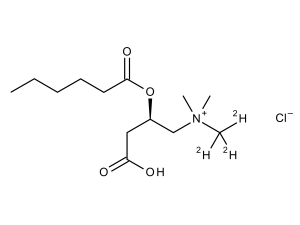
Hexanoyl-L-carnitine-d3 HCl (N-methyl-d3)
$414.86 Add to cart View Product DetailsMolecular Formula : C13 D3 H23 N O4 . Cl
-

Hexatriacontane
$94.88 Add to cart View Product DetailsMolecular Formula : C36 H74
-
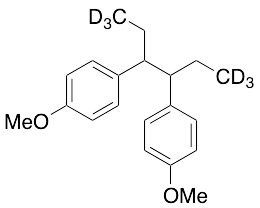
Hexestrol Dimethyl Ether-d6
$1,285.99 Add to cart View Product DetailsMolecular Formula : C20 D6 H20 O2
-
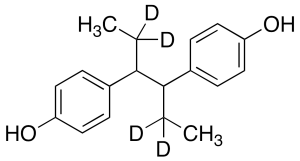
Hexestrol-d4
$1,828.50 Add to cart View Product DetailsMolecular Formula : C18 2H4 H18 O2
-
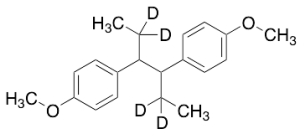
Hexestrol-d4 Dimethyl Ether
$747.79 Add to cart View Product DetailsMolecular Formula : C20 D4 H22 O2
-
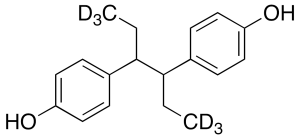
Hexestrol-d6
$1,745.70 Add to cart View Product DetailsMolecular Formula : C18 2H6 H16 O2
-

Hexoprenaline Sulfate
$168.19 Add to cart View Product DetailsMolecular Formula : C22H32N2O6 . H2SO4
-
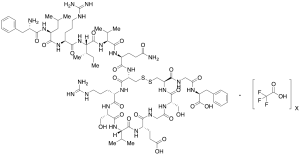
HGH Fragment 176-191 Trifluoroacetic acid
$285.49 Add to cart View Product DetailsMolecular Formula : C78H123N23O22S2 • x(C2HF3O2)
-

Hippuric Acid-d5
$175.95 Add to cart View Product DetailsMolecular Formula : C9 2H5 H4 N O3
-
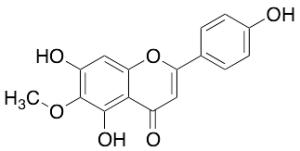
Hispidulin
$130.24 Add to cart View Product DetailsMolecular Formula : C16H12O6
-

Histamine Dihydrochloride
$62.96 Add to cart View Product DetailsMolecular Formula : C5 H9 N3 . 2 Cl H
-
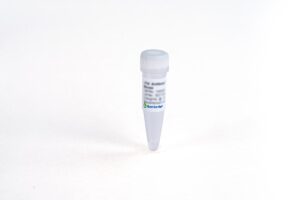
HIV-1 p24 Antibody (5A4), mAb, Mouse
$3,829.50 Add to cart View Product DetailsHuman immunodeficiency virus (HIV) belongs to Lentivirus that infects humans through attacking the body’s immune system. The virus can be divided into HIV type 1 (HIV-1) and HIV type 2 (HIV-2). HIV1 p24 (capsid) protein is critical in HIV-1 viral replication. HIV-1 p24 is a useful biomarker for diagnosing HIV infection.
-

HIV-1 p24 Antibody (M564), mAb, Mouse
$3,829.50 Add to cart View Product DetailsHuman immunodeficiency virus (HIV) belongs to Lentivirus that infects humans through attacking the body’s immune system. The virus can be divided into HIV type 1 (HIV-1) and HIV type 2 (HIV-2). HIV1 p24 (capsid) protein is critical in HIV-1 viral replication. HIV-1 p24 is a useful biomarker for diagnosing HIV infection.
-

HIV-1 p24 Antibody (P152), mAb, Mouse
$3,829.50 Add to cart View Product DetailsHuman immunodeficiency virus (HIV) belongs to Lentivirus that infects humans through attacking the body’s immune system. The virus can be divided into HIV type 1 (HIV-1) and HIV type 2 (HIV-2). HIV1 p24 (capsid) protein is critical in HIV-1 viral replication. HIV-1 p24 is a useful biomarker for diagnosing HIV infection.
-
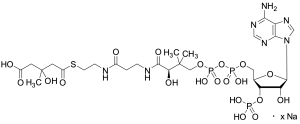
HMG-CoA Sodium Salt
$1,124.70 Add to cart View Product DetailsMolecular Formula : C27H44N7O20P3S.xNa
-
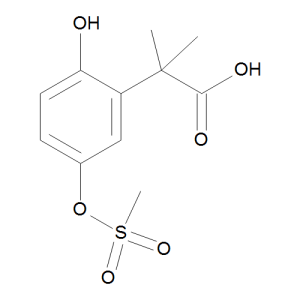
HMSPP
$344.14 Add to cart View Product DetailsMolecular Formula : C11 H14 O6 S
-
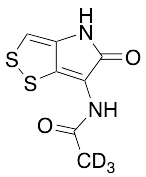
Holomycin-d3
$1,389.49 Add to cart View Product DetailsMolecular Formula : C7H3D3N2O2S2
-
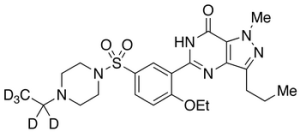
Homo Sildenafil-d5
$1,296.34 Add to cart View Product DetailsMolecular Formula : C23H27D5N6O4S
-

Homocapsaicin I
$237.19 Add to cart View Product DetailsMolecular Formula : C19 H29 N O3
-
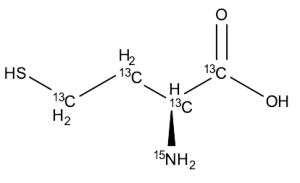
Homocysteine-13C4,15N
$2,867.81 Add to cart View Product DetailsMolecular Formula : ¹³C4H9¹⁵NO2S
-

Homocysteine-cysteine Disulfide
$262.20 Add to cart View Product DetailsMolecular Formula : C7 H14 N2 O4 S2
-
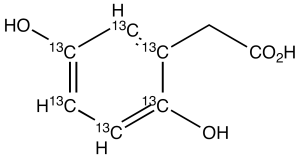
Homogentisic Acid-13C6
$1,888.88 Add to cart View Product DetailsMolecular Formula : C213C6H8O4
-

Homoharringtonine
$62.10 Add to cart View Product DetailsMolecular Formula : C29 H39 N O9
-

Homosalate-d4
$1,735.35 Add to cart View Product DetailsMolecular Formula : C16 D4 H18 O3
-
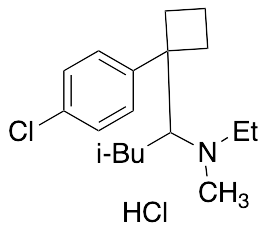
Homosibutramine Hydrochloride
$270.83 Add to cart View Product DetailsMolecular Formula : C18H28ClN . (HCl)
-
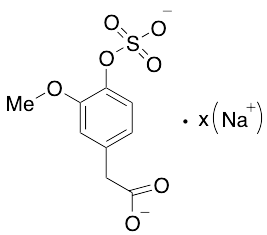
Homovanillic Acid Sulfate Sodium Salt
$355.35 Add to cart View Product DetailsMolecular Formula : C9 H10 O7 S
-
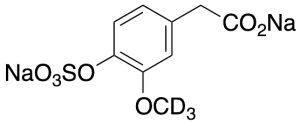
Homovanillic Acid Sulfate Sodium Salt-d3
$1,580.10 Add to cart View Product DetailsMolecular Formula : C9H5D3Na2O7S
-
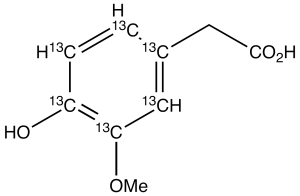
Homovanillic Acid-13C6
$6,056.48 Add to cart View Product DetailsMolecular Formula : 13C6 C3 H10 O4
-

Homovanillic Acid-d3
$1,909.58 Add to cart View Product DetailsMolecular Formula : C9 2H3 H7 O4
-

Honokiol
$71.59 Add to cart View Product DetailsMolecular Formula : C18 H18 O2
-

hsCRP (11C2), mAb, Mouse
$388.13 Add to cart View Product DetailsC-reactive protein (CRP) is synthesized in the liver by macrophage. Its level in blood increases when inflammation occurs. CRP serves as a useful marker for diagnosis of inflammation. High-sensitivity C-reactive protein (hsCRP), can serve as a risk marker for the diagnosis of myocardial infarction, ischemic stroke, peripheral vascular disease. Measuring hsCRP in blood is helpful to provide positive treatment of the disease.
-

hsCRP (12D6), mAb, Mouse
$388.13 Add to cart View Product DetailsC-reactive protein (CRP) is synthesized in the liver by macrophage. Its level in blood increases when inflammation occurs. CRP serves as a useful marker for diagnosis of inflammation. High-sensitivity C-reactive protein (hsCRP), can serve as a risk marker for the diagnosis of myocardial infarction, ischemic stroke, peripheral vascular disease. Measuring hsCRP in blood is helpful to provide positive treatment of the disease.
-

HT-2 Toxin (>85%)
$1,947.53 Add to cart View Product DetailsMolecular Formula : C22 H32 O8
-
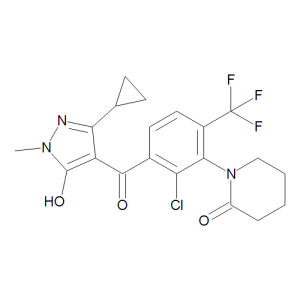
Huanbifucaotong
$144.04 Add to cart View Product DetailsMolecular Formula : C20 H19 Cl F3 N3 O3
-

Human IgE (RC13), mAb, Mouse
$1,000.50 Add to cart View Product DetailsIgE is a type of immunoglobulins produced by the immune system. It is composed of two heavy chains and two light chains, like Ig molecules. IgE plays an essential role in various allergic reactions. Its main function is immunity to parasites such as Schistosoma mansoni, Trichinella spiralis, and Fasciola hepatica. It also plays an important role in type I hypersensitivity. Total IgE is considered as a significant marker of allergic state.
-

Human IgE (RC7H), mAb, Mouse
$1,000.50 Add to cart View Product DetailsIgE is a type of immunoglobulins produced by the immune system. It is composed of two heavy chains and two light chains, like Ig molecules. IgE plays an essential role in various allergic reactions. Its main function is immunity to parasites such as Schistosoma mansoni, Trichinella spiralis, and Fasciola hepatica. It also plays an important role in type I hypersensitivity. Total IgE is considered as a significant marker of allergic state.
-

Human Kappa Light Chain (2F1C1), mAb, Mouse
$3,268.88 Add to cart View Product DetailsImmunoglobulins (Ig) and free light chains (FLC) is involved in humoral immune response. Ig is composed of two identical light chains and two identical heavy chains. FLC contains two types: kappa free light chain (KFLC) and lambda free light chain (LFLC). The expression of Kappa or Lambda is greatly increased in multiple myeloma or other B cell malignancies. It is useful for the identification of certain non-Hodgkin’s lymphomas, leukemias and plasmacytomas. Immunohistochemistry is commonly applied for the detection of free light chains.
-

Human Lambda Light Chain (2D54), mAb, Mouse
$3,268.88 Add to cart View Product DetailsImmunoglobulins (Ig) and free light chains (FLC) is involved in humoral immune response. Ig is composed of two identical light chains and two identical heavy chains. FLC contains two types: kappa free light chain (KFLC) and lambda free light chain (LFLC). The expression of Kappa or Lambda is greatly increased in multiple myeloma or other B cell malignancies. It is useful for the identification of certain non-Hodgkin’s lymphomas, leukemias and plasmacytomas. Immunohistochemistry is commonly applied for the detection of free light chains.
-
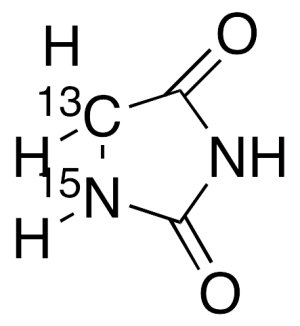
Hydantoin-5-13C,1-15N
$1,696.54 Add to cart View Product DetailsMolecular Formula : C213CH4N15NO2
-

Hydralazine Hydrochloride
$56.93 Add to cart View Product DetailsMolecular Formula : C8 H8 N4 . Cl H
-
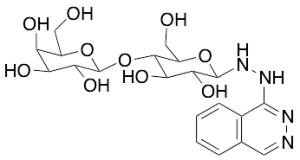
Hydralazine-N-lactose
$166.46 Add to cart View Product DetailsMolecular Formula : C20H28N4O10
-
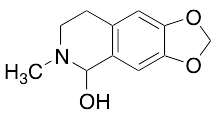
Hydrastinine
$184.58 Add to cart View Product DetailsMolecular Formula : C11H13NO3
-

Hydrochlorothiazide Dimer
$1,067.78 Add to cart View Product DetailsMolecular Formula : C15 H16 Cl2 N6 O8 S4
-
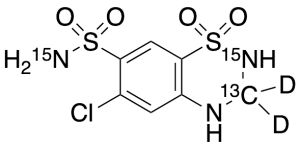
Hydrochlorothiazide-13C,15N2,d2
$1,872.49 Add to cart View Product DetailsMolecular Formula : C613CH6D2ClN15N2O4S2






